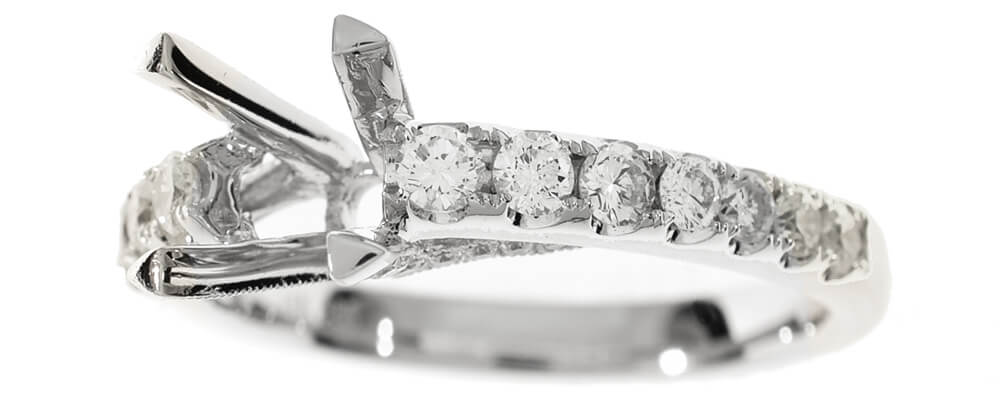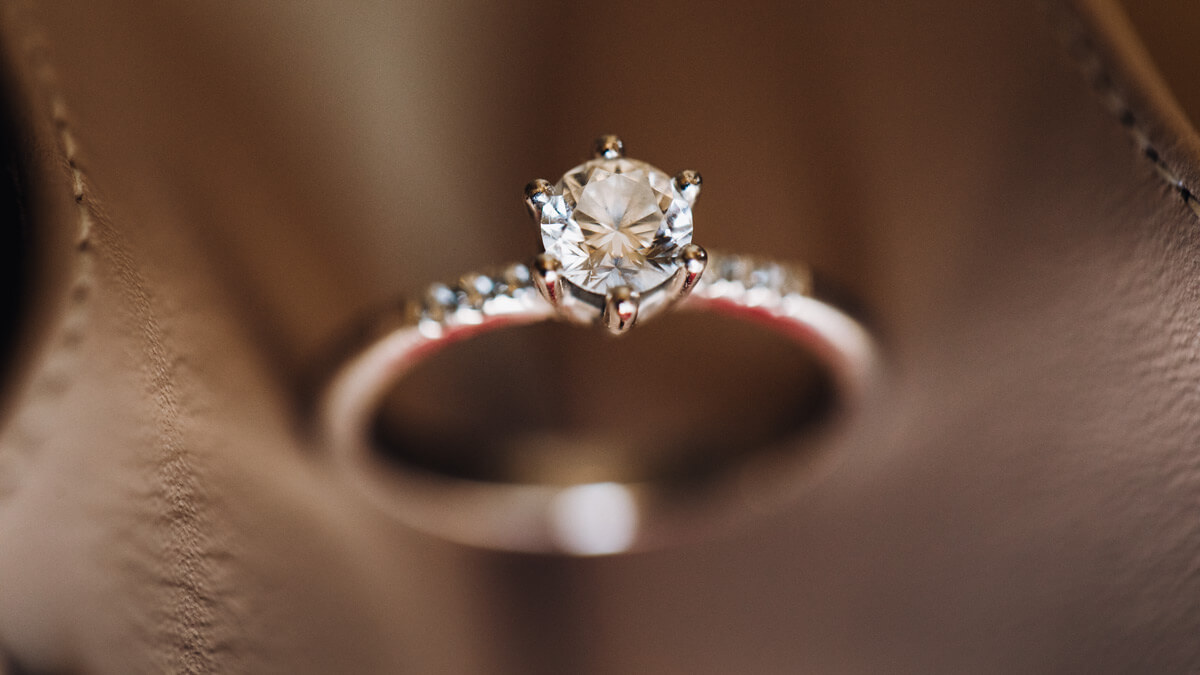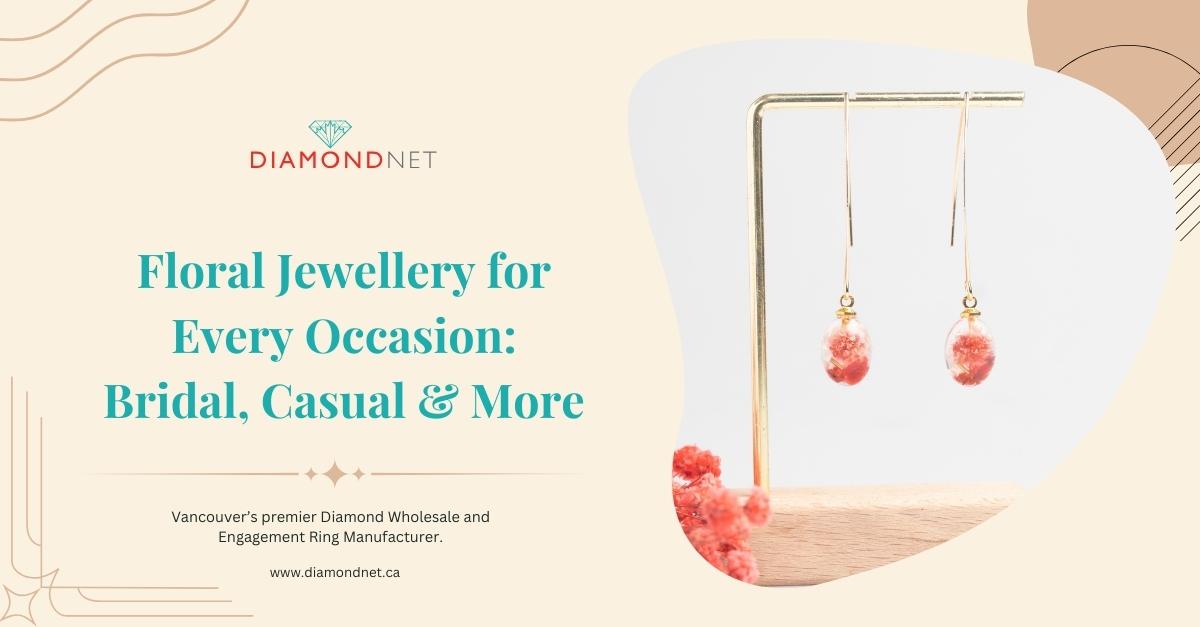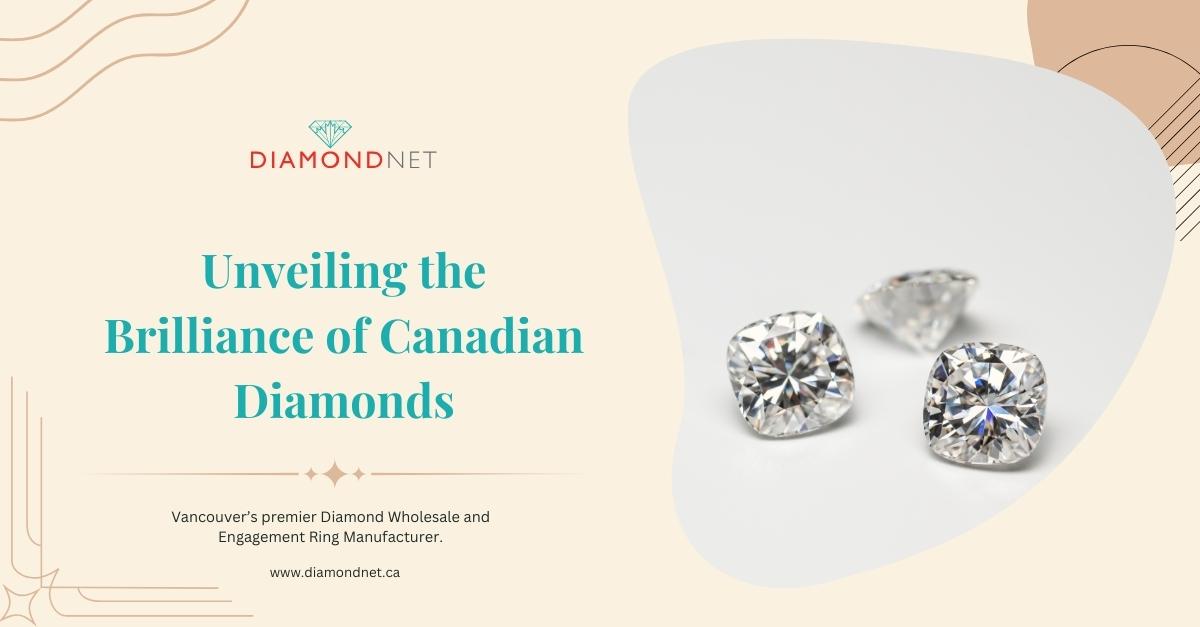After choosing a diamond, prongs may be the most essential component of your engagement ring. Prongs are the little bits of metal that bend to attach and hold the stone in place. Using prongs is the most common way to mount an engagement ring as they support the stone, but they differ in style and amount depending on the ring. While you need prongs in your ring for obvious reasons, many people aim to diminish their appearance to keep the main focus on the center diamond (rather than the metal that is holding it in place). When considering the aesthetics of your ring, prong decisions will come into it eventually. Read on for some pros and cons pertaining to prong choice.
It really comes down to four or six-prong options. Anything beyond these categories is specialized—we won’t concern ourselves with those. There is no definitive answer to how many prongs a ring should have, but there are pros and cons to deciding to go with more or less. When you begin looking at rings, you’ll need to decide whether the security or the appearance of the stone is more important.
Safety, first function of engagement ring prong
Safety is the number one function of the prong. More prongs will have a direct effect on the security of the stone. Someone who purchases a six-prong engagement ring is much less likely to lose a stone than a someone who chooses the four-prong route. There is also more surface area covered by additional prongs, which means the diamond is further protected from accidental damage.
If your fiancé smacks the ring against something, the six-prong setting is far more likely to protect the diamond than a four-prong setting would be. It really comes down to math. If one prong in a six-prong setting breaks, you have 5 prongs left intact. Having 5 prongs left to secure your stone is significantly different than having only the remaining 3 from a four-prong setting.
In general, round stones look better set in six prongs. The stone is more visible when there are only four prongs, which can make them look more angular and squarer. If you have six prongs, you don’t need to worry about the illusion of a square form.

Four-prong engagement ring
The more prongs the ring has, the harder it is to clean
The cleaning regimen for your engagement ring differs according to prong setting as well. A six-prong solitaire ring will be much harder to clean than a four-prong setting of a similar style. In most cases, the more prongs the ring has, the more difficult it is to clean. This is due to additional nooks and crannies where dirt can accumulate.
Metal choices for engagement ring prongs
Once you’ve decided on your number of prongs, it’s time to think about metal. Prongs can differ in metal even from the rest of the band. Many rings are sold with white prongs regardless of the metal used to make the ring’s body. White gives the diamond a clearer color, whereas yellow gold can often make the diamond appear yellowish. Most often these prongs are made of white gold or platinum.
White gold is very popular for diamond engagement ring prongs because it is white and an alloy. This makes white gold prongs more durable than other types of gold (like yellow) and a more appropriate choice for the security demands of a ring prong.
Platinum is another popular choice for prongs. Platinum alloys are more malleable and are not as hard as nickel-based white gold alloys with similar amounts of base metal Also, white gold may wear down over time, but platinum’s color does not change as the metal wears. Because of its obvious benefits, however, platinum costs significantly more than white gold.
Those are the cold hard facts about engagement ring prongs. Time to go forth and prong for yourself. Remember: Security, maintenance, and of course, aesthetic appeal. Most importantly, have fun shopping for the love of your life!



